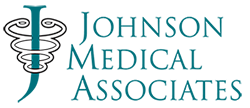- Focus, attention, and brain fog
- Anxiety & depression
- Stress management
- Mood related issues
- Sleep
- Migraines/headaches
- Traumatic Brain Injury (TBI)
EEG/QEEG
A quantitative EEG is a brain map. This is an electrical measurement, analysis, and quantification of the brainwaves, or the brain in action. EEG is a functional test of the brain, unlike fMRI which is a structural measurement. We first gather the raw EEG data, and then we process it through a database to compare it to healthy individuals’ brainwaves. This gives us a comparison of the client’s brain relative to others’. This is one of the first step in our assessment process and provides the roadmap for all the training that follows.
What can I expect during the QEEG?
Typically it takes one hour to complete the QEEG. During that time, the clinician will affix a cap with nodes to your scalp using a harmless adhesive, and have you sit down. While the brain map information is being recorded, the clinician will direct you to do various things, such as ask you to keep your eyes open or closed, adjust your sitting position, muscle tension, or gaze to ensure a good reading. This process has little or no side effects for most people – maybe minor headache from focusing with their eyes for an extended period.
Neurofeedback Treatment Services:
Assess, Address, Reassess
Assess – Symptom checklist, labs for neurotransmitters and environmental toxins, allergy skin-testing, QEEG brain mapping
Address – Supplements, hyperbaric oxygen therapy, chelations
- Biofeedback (HRV) – Heart rate variability teaches people how to breathe using their diaphragm to activate the parasympathetic nervous system before starting the process of retraining neuronal function. Aids with anxiety, stress and muscle relaxation before Neurofeedback (NFB).
- Neurofeedback (NFB) – A brain training process that is similar to working out at the gym. Like physical exercise, a consistent routine over time is necessary for change and improvement. Usually people start to notice a difference at around 10 sessions, but 20 sessions is normally a minimum amount needed to retrain the brain. The process involves an EEG hookup with positive and negative reinforcement displayed in front of the patient, depending on their brain function.
- Neuromodulation – This is stimulation using QEEG to guide what and where the brain could use stimulation. Very small electrical pulses are used to either encourage areas of the brain to wake up or break up their neuronal pathways. This is often used in conjunction with NFB to help move the needle for “stuck” clients.
-
Types of Neuromodulation:
- transcranial alternating current stimulation (tACS)
- transcranial direct current (tDCS)
- transcranial pink noise (tPNS)
- pulsed electromagnetic field (PEMF)
Reassess – Redo tests from the beginning to contextualize and measure symptom changes.
Watch: Recent JMA Podcasts on Neurofeedback and BioFeedback
QEEG@johnsonmedicalassociates.com
Mon-Fri 9am to 4pm (subject to change)
Email to set up a phone call
Address:
Johnson Medical Associates
997 Hampshire Lane
Richardson, TX 75080-8105
Phone:
+1 (972) 479-0400
Phone:
+1 (800) 807-7555
Fax:
+1 (972) 479-9435
Monday-Thursday:
9:00am – 5:00pm
Friday:
Closed
Saturday & Sunday:
Closed

